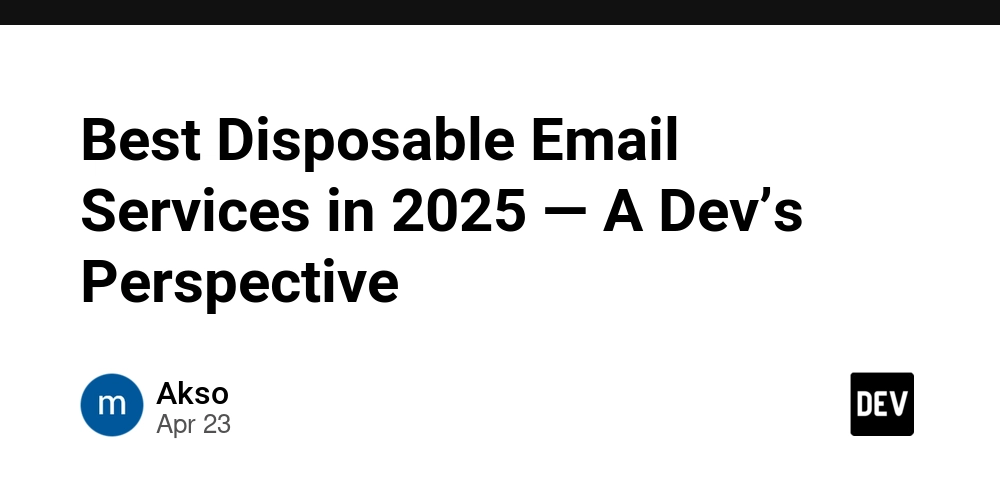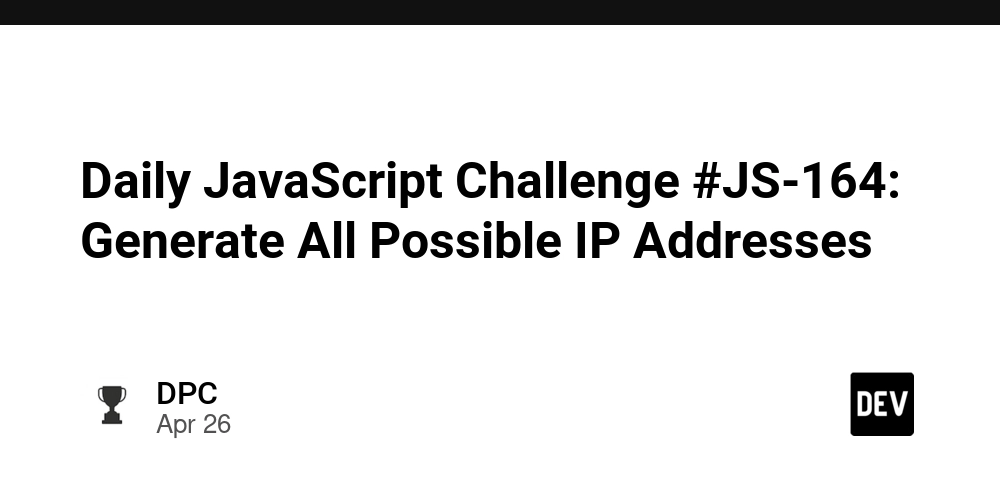Gitcoin Grants: Pioneering Open Source Funding and Innovation
Abstract Gitcoin Grants is revolutionizing the way open source projects secure funding by utilizing advanced concepts like quadratic funding. This post explores the history, core concepts, applications, challenges, and future outlook of Gitcoin Grants. We also dive into how its innovative funding model is transforming developer empowerment, fostering collaboration, and ensuring financial sustainability for open source software. In addition to providing technical insights, we connect to broader blockchain integration and open source licensing trends by weaving in related insights from reputable sources. Introduction In today’s digital age, open source projects have become the backbone of innovation. However, sustaining open source software and maintaining developer motivation remains a challenge. Enter Gitcoin Grants—a platform that leverages blockchain technology, decentralized funding, and community participation to empower developers. Launched in 2017, Gitcoin bridges the funding gap by offering new, creative ways for the community to support innovative projects with models like quadratic funding. This post will explain how Gitcoin Grants works, its relevance in the open source ecosystem, and its connection to emerging trends in blockchain-based funding and open source licensing. Background and Context Open source software has always been driven by collaboration, sharing, and community involvement. Yet, funding such projects has conventionally been a hurdle. Traditional donation models or corporate sponsorships do not always align with the democratic nature of open source. Recognizing this challenge, platforms like Gitcoin emerged to provide an infrastructure for decentralized funding that echoes the collaborative spirit of open source. Gitcoin was established with a mission to help developers secure financial independence while working on projects that have real-world impact. Its innovative funding methods—which range from bounties and hackathons to donation rounds like Gitcoin Grants—are redefining economic empowerment for open source contributors. Gitcoin Grants, in particular, uses quadratic funding to ensure that small but widespread community contributions reap a larger share in matching funds. In today’s interconnected ecosystem, Gitcoin Grants not only supports technical innovations but also influences related fields such as blockchain licensing. For example, insights on blockchain and open source licensing illustrate the intersection of funding and legal frameworks necessary for sustainable open source projects. Core Concepts and Features Gitcoin Grants is built on several foundational ideas which include: Quadratic Funding Mechanism At its heart, Gitcoin Grants uses a quadratic funding (QF) mechanism. Here’s how it breaks down: Individual Donations: Instead of relying heavily on a few large donors, QF encourages a large number of community members to make smaller contributions. Match Calculation: The matching pool multiplies the impact of these small donations. The formula involves squaring the sum of the square roots of each contribution. The mechanism implicitly gives more weight to broad, grassroots support. Proportional Distribution: Funds—both individual and matching—are allocated proportionally, ensuring that projects with broader community approval receive higher funding. Community-Driven Development Gitcoin Grants places power firmly in the hands of the community. With its funding model, it emboldens developers to engage actively with users, incorporate community feedback, and maintain transparency in project development. This approach has not only diversified the types of projects funded but has also led to greater collaboration across different technological sectors. Empowerment and Collaboration One of the most astonishing outcomes of Gitcoin Grants is that it empowers developers to dedicate their time to innovation without the constant pressure of financial uncertainty. Through Gitcoin’s infrastructure, many developers have achieved recognition and economic empowerment in the competitive field of open source. Additionally, the platform enables enhanced collaboration by fostering a connection between developers, potential funders, and users through improved networking and feedback cycles. Below is a summary of key features: Feature Description Quadratic Funding Uses a mathematical model to amplify small contributions and ensure equitable matching based on community support. Decentralized Funding Leverages blockchain technology to create a transparent and secure funding environment. Developer Empowerment Provides a platform for financial independence and recognition for open source developers. Enhanced Collaboration Encourages dialogue and interaction between project maintainers and the community, enabling continuous innovation and feedback. Integration with Blockchain L
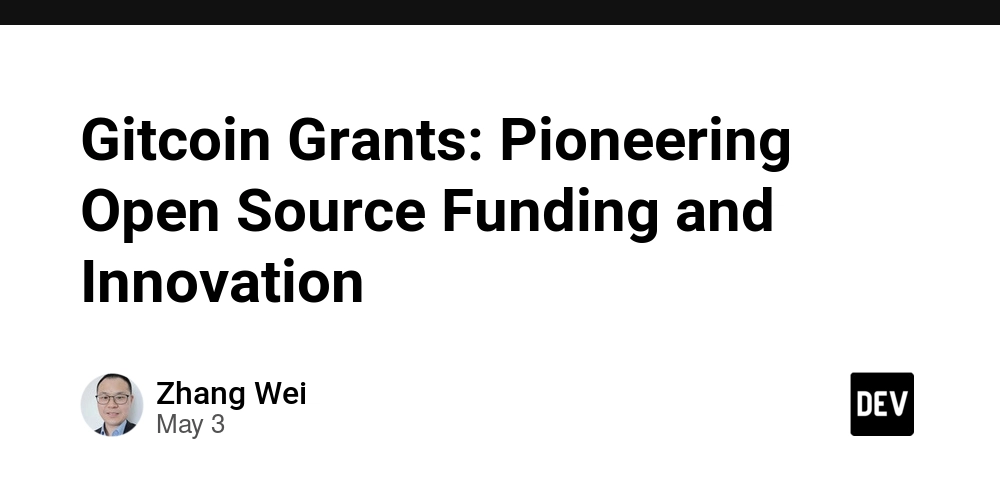
Abstract
Gitcoin Grants is revolutionizing the way open source projects secure funding by utilizing advanced concepts like quadratic funding. This post explores the history, core concepts, applications, challenges, and future outlook of Gitcoin Grants. We also dive into how its innovative funding model is transforming developer empowerment, fostering collaboration, and ensuring financial sustainability for open source software. In addition to providing technical insights, we connect to broader blockchain integration and open source licensing trends by weaving in related insights from reputable sources.
Introduction
In today’s digital age, open source projects have become the backbone of innovation. However, sustaining open source software and maintaining developer motivation remains a challenge. Enter Gitcoin Grants—a platform that leverages blockchain technology, decentralized funding, and community participation to empower developers. Launched in 2017, Gitcoin bridges the funding gap by offering new, creative ways for the community to support innovative projects with models like quadratic funding. This post will explain how Gitcoin Grants works, its relevance in the open source ecosystem, and its connection to emerging trends in blockchain-based funding and open source licensing.
Background and Context
Open source software has always been driven by collaboration, sharing, and community involvement. Yet, funding such projects has conventionally been a hurdle. Traditional donation models or corporate sponsorships do not always align with the democratic nature of open source. Recognizing this challenge, platforms like Gitcoin emerged to provide an infrastructure for decentralized funding that echoes the collaborative spirit of open source.
Gitcoin was established with a mission to help developers secure financial independence while working on projects that have real-world impact. Its innovative funding methods—which range from bounties and hackathons to donation rounds like Gitcoin Grants—are redefining economic empowerment for open source contributors. Gitcoin Grants, in particular, uses quadratic funding to ensure that small but widespread community contributions reap a larger share in matching funds.
In today’s interconnected ecosystem, Gitcoin Grants not only supports technical innovations but also influences related fields such as blockchain licensing. For example, insights on blockchain and open source licensing illustrate the intersection of funding and legal frameworks necessary for sustainable open source projects.
Core Concepts and Features
Gitcoin Grants is built on several foundational ideas which include:
Quadratic Funding Mechanism
At its heart, Gitcoin Grants uses a quadratic funding (QF) mechanism. Here’s how it breaks down:
- Individual Donations: Instead of relying heavily on a few large donors, QF encourages a large number of community members to make smaller contributions.
- Match Calculation: The matching pool multiplies the impact of these small donations. The formula involves squaring the sum of the square roots of each contribution. The mechanism implicitly gives more weight to broad, grassroots support.
- Proportional Distribution: Funds—both individual and matching—are allocated proportionally, ensuring that projects with broader community approval receive higher funding.
Community-Driven Development
Gitcoin Grants places power firmly in the hands of the community. With its funding model, it emboldens developers to engage actively with users, incorporate community feedback, and maintain transparency in project development. This approach has not only diversified the types of projects funded but has also led to greater collaboration across different technological sectors.
Empowerment and Collaboration
One of the most astonishing outcomes of Gitcoin Grants is that it empowers developers to dedicate their time to innovation without the constant pressure of financial uncertainty. Through Gitcoin’s infrastructure, many developers have achieved recognition and economic empowerment in the competitive field of open source. Additionally, the platform enables enhanced collaboration by fostering a connection between developers, potential funders, and users through improved networking and feedback cycles.
Below is a summary of key features:
| Feature | Description |
|---|---|
| Quadratic Funding | Uses a mathematical model to amplify small contributions and ensure equitable matching based on community support. |
| Decentralized Funding | Leverages blockchain technology to create a transparent and secure funding environment. |
| Developer Empowerment | Provides a platform for financial independence and recognition for open source developers. |
| Enhanced Collaboration | Encourages dialogue and interaction between project maintainers and the community, enabling continuous innovation and feedback. |
Integration with Blockchain Licensing
Gitcoin’s approach intersects with modern developments in blockchain licensing. Solutions discussed in the future of open source with blockchain integration highlight how decentralized funding can be married with innovative licensing models to pave the way for a sustainable creative economy.
Moreover, the topic of sustainability of open source through tokenization emphasizes how projects can leverage blockchain-based tokens to create new revenue streams, empowering communities and incentivizing contributions in previously unexplored ways.
Applications and Use Cases
Gitcoin Grants’ innovative funding model has been applied across various sectors. Below are a few illustrative examples:
Blockchain Infrastructure Projects: Many blockchain ecosystems are built on open source principles. Gitcoin Grants has funded projects that contribute to the development of decentralized networks, smart contract platforms, and interoperability protocols. These projects often require rapid innovation and robust community engagement—both of which are achieved through Gitcoin’s matching funding mechanism.
Social Impact Tech: Open source projects focusing on social and environmental impact have also found a home on Gitcoin Grants. By harnessing the power of community donations via quadratic funding, these projects can address issues like climate change, data privacy, and digital inclusion on a larger scale. Platforms like GitHub Sponsors also offer similar avenues, but Gitcoin provides a blockchain-based alternative that ensures transparency and democratic distribution of funds.
Emerging Developer Tools: Startups and independent developers increasingly rely on robust open source tools. Gitcoin Grants has become a catalyst in funding tools that enhance developer productivity, security, and collaboration. This ecosystem of tools lays down a foundation for future technological advancements and supports innovative ideas from underrepresented communities.
A bullet list summarizing practical use cases is provided below:
-
Decentralized Infrastructure Development
- Funding from Gitcoin Grants supports critical improvements to blockchain platforms.
- Increased emphasis on community-approved projects enhances network scalability.
-
Social Impact and Sustainability Initiatives
- Projects addressing environmental concerns and social justice receive timely funding.
- Engagement with local communities helps tailor solutions to specific needs.
-
Innovative Developer Tools and Platforms
- Funding open source projects that build next-generation developer tools.
- Accelerated innovation through collaborative funding models.
In addition, inspired by insights from Dev.to posts such as “Embracing a New Era: Open Source Meets Blockchain” and “What is the Tidelift Open Source Funding Model: An In-Depth Look”, we can clearly see that Gitcoin Grants is part of a broader movement toward more democratic and transparent funding.
Challenges and Limitations
Despite its impressive impact, Gitcoin Grants faces several technical and operational challenges:
Collusion and Manipulation: One concern is the possibility of collusion among donors. If groups coordinate their contributions solely to manipulate the quadratic funding formula, the intended democratic distribution of funds may be skewed.
Regulatory and Legal Uncertainties: Operating on Ethereum and using blockchain elements introduces complexities with regulatory oversight. With evolving legislation concerning cryptocurrencies and decentralized applications, platforms like Gitcoin Grants must continually adapt their compliance and governance frameworks.
Scalability of Matching Pool: As more developers and projects join the platform, maintaining a sufficiently large matching pool becomes critical. The platform has to scale effectively while ensuring that the matching algorithm remains transparent and fair.
Awareness and Adoption: While many developers and funders are aware of Gitcoin Grants, bridging the knowledge gap for new entrants is an ongoing challenge. Educating a broader audience about the nuances of quadratic funding and the benefits of community-driven models requires consistent effort.
A table summarizing these challenges can be seen below:
| Challenge | Description |
|---|---|
| Donor Collusion | Risks of coordinated actions potentially distorting the matching formula. |
| Regulatory Environment | Uncertainty in crypto and blockchain regulations could affect operations and compliance. |
| Scalability Issues | The need to ensure a sufficiently large matching pool as platform usage multiplies. |
| Adoption and Education | Outreach to new developers and funders to understand and trust the decentralized funding model. |
Each of these challenges calls for innovative governance solutions and technical enhancements to ensure that Gitcoin Grants continues to lead the way in open source funding.
Future Outlook and Innovations
Looking ahead, Gitcoin Grants and similar platforms have tremendous potential to influence broader trends in technology and finance. Some future possibilities include:
Integration with Decentralized Autonomous Organizations (DAOs)
DAOs are increasingly being used to manage project funding and governance in a decentralized manner. Integrating Gitcoin Grants with DAO-based models could further democratize decision-making and resource distribution. This integration may also open new channels for funding beyond traditional quadratic models.
Evolving Funding Algorithms
This funding space is ripe for experimentation with new matching algorithms and decentralized mechanisms. Research on improvements over quadratic funding and the integration of artificial intelligence (AI) for fraud detection and trend forecasting is ongoing. Such innovations could further enhance the platform’s efficiency and fairness.
Expansion into Diverse Sectors
While current projects are largely focused on blockchain, technology, and social impact, the underlying funding model could be adapted to other areas. Look for expansion into fields like education tech, healthcare innovation, and even creative industries, where open source collaboration has yet to be fully tapped.
Strengthening License and Compliance Ecosystems
As open source projects scale, the alignment of funding and licensing will be crucial. Innovations in blockchain-based open source licensing—discussed in depth in this article about the future of open source with blockchain integration—will become increasingly important, ensuring that financial and intellectual property rights are well-protected.
Interdisciplinary Collaboration
Finally, the future of open source funding will not be limited to technology alone. Collaboration across industries—integrating insights from fields such as legal tech, finance, and even art—will create holistic ecosystems that foster innovation globally. Platforms like Gitcoin Grants already hint at a future where open source is the norm and collaborative funding platforms are key enablers of technological progress.
Additional insights from influential voices in the space, including articles on supporting open source developer revenue streams and the power of a thriving Gitcoin community, further underscore the momentum behind these innovations.
Summary
Gitcoin Grants is not just a funding platform—it is a pioneer in harnessing the power of decentralized funding models to transform the open source ecosystem. By leveraging quadratic funding, community engagement, and blockchain transparency, Gitcoin Grants is redefining how projects secure sustainable financial support. The platform’s holistic approach addresses key challenges in developer funding and opens up new avenues for interdisciplinary innovation.
To summarize the key takeaways:
- Gitcoin Grants harnesses quadratic funding to democratize open source funding.
- Community-driven development fosters enhanced collaboration and sustainability.
- Innovative applications include blockchain infrastructure, social impact tech, and developer tools.
- Challenges such as collusion, regulatory uncertainty, and scalability need to be continually addressed.
- Future integration with DAOs, advanced funding algorithms, and interdisciplinary collaboration points to an exciting road ahead.
For further reading on related topics, be sure to check out these authoritative sources:
• Gitcoin Grants on License Token
• Blockchain and Open Source Licensing
• The Future of Open Source with Blockchain Integration
• Sustainability of Open Source through Tokenization
• GitHub Sponsors
Further insights from the developer community can also be found in several notable posts on Dev.to such as:
• What is the Tidelift Open Source Funding Model: An In-Depth Look
• Embracing a New Era: Open Source Meets Blockchain
• Navigating Financial Challenges in Open Source Projects
By continuing to foster collaboration, encouraging community participation, and embracing technological innovations in funding and governance, Gitcoin Grants is laying the foundation for a robust, decentralized future. It stands as a beacon for how open source projects can thrive, ensuring that innovation remains powered by a united, engaged community.
In conclusion, Gitcoin Grants is a groundbreaking platform that not only empowers developers but also demonstrates that funding for public goods can be democratized and made sustainable. As we move into a future where blockchain, tokenization, and decentralized governance become mainstream, platforms like Gitcoin Grants will undoubtedly play an increasingly essential role in shaping the digital landscape.
Through its successful integration of technological innovation with community-driven funding models, Gitcoin Grants is setting the stage for a new era of open source collaboration—one where every contribution is valued, and every project has the potential to make a lasting impact.
Whether you are a developer looking for sustainable funding, a researcher exploring blockchain integration, or simply a tech enthusiast curious about the future of open source, Gitcoin Grants offers insights and opportunities that resonate with the spirit of innovation. Join the revolution, support your favorite projects, and help drive the future of open source forward.
Happy coding and community building!











































































![Apple Developing Battery Case for iPhone 17 Air Amid Battery Life Concerns [Report]](https://www.iclarified.com/images/news/97208/97208/97208-640.jpg)
![Apple to Split iPhone Launches Across Fall and Spring in Major Shakeup [Report]](https://www.iclarified.com/images/news/97211/97211/97211-640.jpg)
![Apple to Move Camera to Top Left, Hide Face ID Under Display in iPhone 18 Pro Redesign [Report]](https://www.iclarified.com/images/news/97212/97212/97212-640.jpg)
![AirPods 4 On Sale for $99 [Lowest Price Ever]](https://www.iclarified.com/images/news/97206/97206/97206-640.jpg)











































































































_Inge_Johnsson-Alamy.jpg?width=1280&auto=webp&quality=80&disable=upscale#)


























































































































![[The AI Show Episode 145]: OpenAI Releases o3 and o4-mini, AI Is Causing “Quiet Layoffs,” Executive Order on Youth AI Education & GPT-4o’s Controversial Update](https://www.marketingaiinstitute.com/hubfs/ep%20145%20cover.png)
















































































































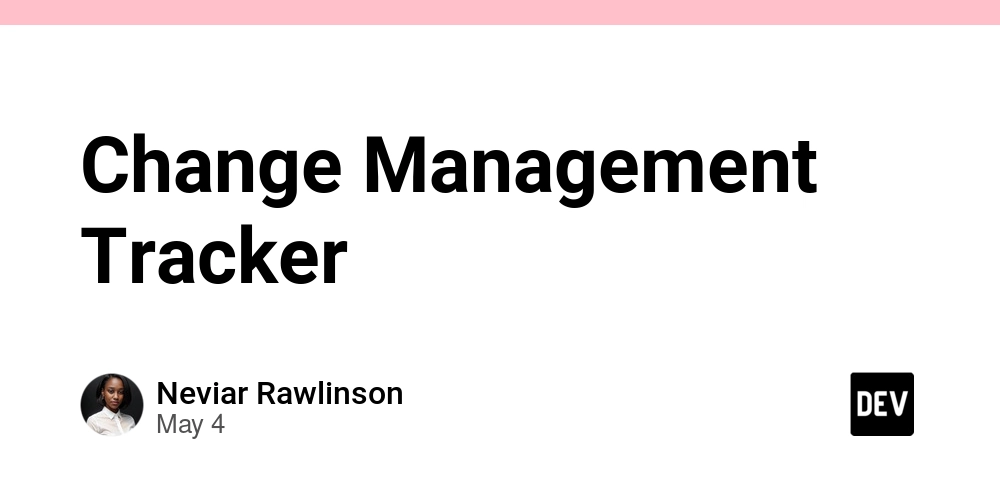
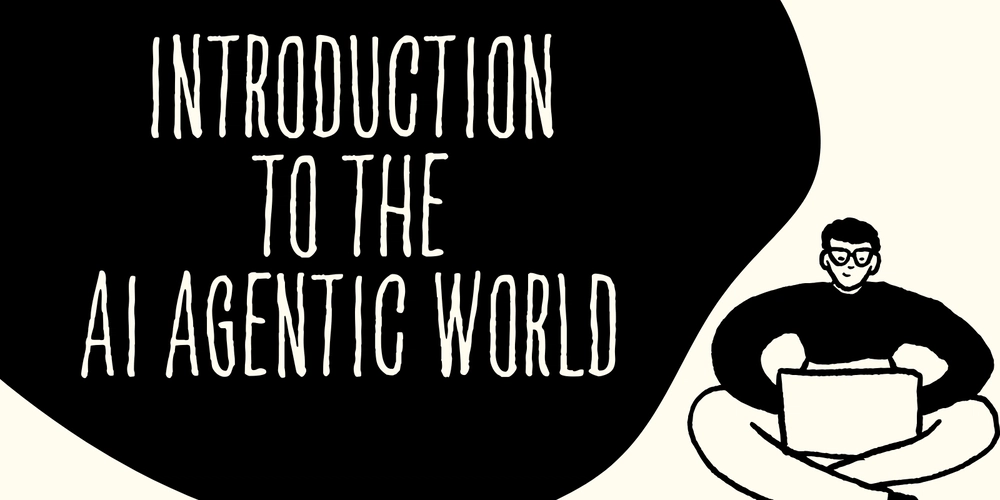

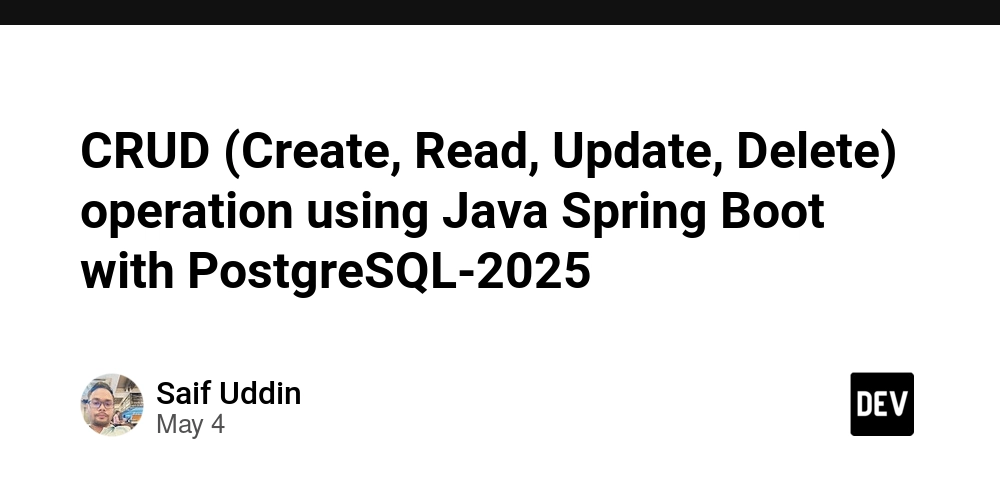











































![From Art School Drop-out to Microsoft Engineer with Shashi Lo [Podcast #170]](https://cdn.hashnode.com/res/hashnode/image/upload/v1746203291209/439bf16b-c820-4fe8-b69e-94d80533b2df.png?#)

![[FREE EBOOKS] Learn Computer Forensics — 2nd edition, AI and Business Rule Engines for Excel Power Users & Four More Best Selling Titles](https://www.javacodegeeks.com/wp-content/uploads/2012/12/jcg-logo.jpg)
































































































